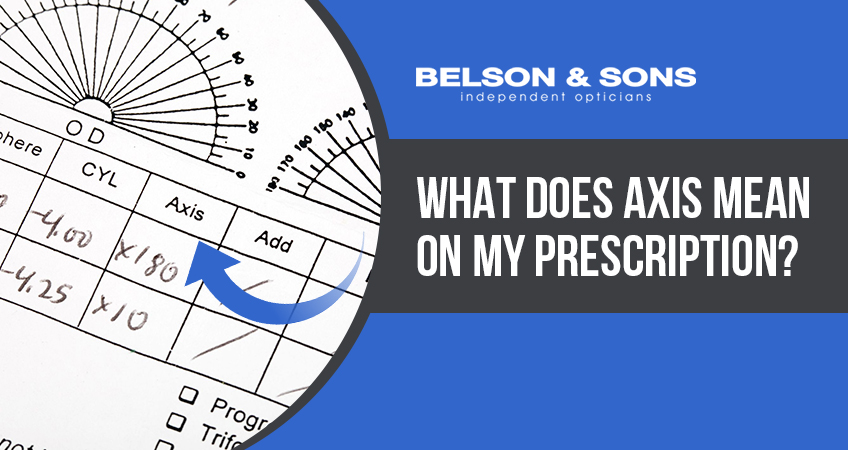What is axis on eye prescription?
Editor’s Note: “What is axis on eye prescription” have published on [date].
We understand that understanding “what is axis on eye prescription” can be a daunting task. That’s why we’ve done the hard work for you and put together this comprehensive guide. In this guide, we’ll explain everything you need to know about “what is axis on eye prescription,” including its importance and benefits.
Key takeaways
What is axis on eye prescription?
What is axis on eye prescription
The axis on an eye prescription is a number that indicates the direction of the astigmatism in your eye. Astigmatism is a condition in which the cornea, the clear front cover of the eye, is not perfectly round. This causes light to be focused in two different directions, resulting in blurred vision.
- Definition: The axis is measured in degrees from 0 to 180.
- Measurement: It is typically written as a number between 0 and 180, followed by the letters “”.
- Purpose: The axis helps the doctor determine the correct orientation of the corrective lens.
- Correction: Lenses with the correct axis will correct the astigmatism and provide clear vision.
- Importance: The axis is an important part of an eye prescription because it ensures that the corrective lenses are properly aligned.
In addition to the key aspects listed above, the axis on an eye prescription can also be used to determine the type of astigmatism you have. There are two main types of astigmatism: regular astigmatism and irregular astigmatism. Regular astigmatism is the most common type and occurs when the cornea is not perfectly round. Irregular astigmatism occurs when the cornea has a more complex shape, such as a cone shape.
Definition
The axis is an important part of an eye prescription because it ensures that the corrective lenses are properly aligned. This is important because astigmatism can cause blurred vision if the lenses are not aligned correctly.
The axis is measured in degrees from 0 to 180. The number 0 degrees represents the vertical axis, and the number 180 degrees represents the horizontal axis. The axis of astigmatism is the angle between the vertical axis and the steepest axis of the cornea.
For example, if the steepest axis of the cornea is at 30 degrees from the vertical axis, then the axis of astigmatism would be 30 degrees. This information would be written on the eye prescription as “Axis: 30 degrees”.
The axis is a key component of an eye prescription because it ensures that the corrective lenses are properly aligned and that the patient has clear vision.
Measurement
The axis of astigmatism is measured in degrees from 0 to 180. The number 0 degrees represents the vertical axis, and the number 180 degrees represents the horizontal axis. The axis of astigmatism is the angle between the vertical axis and the steepest axis of the cornea.
For example, if the steepest axis of the cornea is at 30 degrees from the vertical axis, then the axis of astigmatism would be 30 degrees. This information would be written on the eye prescription as “Axis: 30 degrees”.
The axis is a key component of an eye prescription because it ensures that the corrective lenses are properly aligned and that the patient has clear vision.
Without the axis measurement, the corrective lenses would not be able to correct the astigmatism properly, and the patient would continue to experience blurred vision.
Purpose
The axis of astigmatism is a critical component of an eye prescription because it helps the doctor determine the correct orientation of the corrective lens. This is important because the axis of the corrective lens must be aligned with the axis of astigmatism in order to correct the blurred vision caused by astigmatism.
For example, if the axis of astigmatism is 30 degrees, then the axis of the corrective lens must also be 30 degrees. If the axis of the corrective lens is not aligned with the axis of astigmatism, then the blurred vision will not be corrected.
The axis of astigmatism is typically measured during an eye exam. The doctor will use a special instrument called a keratometer to measure the curvature of the cornea. The keratometer will project a series of rings onto the cornea, and the doctor will measure the distance between the rings. The axis of astigmatism is the angle between the vertical axis and the steepest axis of the cornea.
Once the doctor has measured the axis of astigmatism, they will write it on the eye prescription. The axis will be written as a number between 0 and 180, followed by the letters “”.
Correction
The axis of astigmatism is a critical component of an eye prescription because it helps the doctor determine the correct orientation of the corrective lens. This is important because the axis of the corrective lens must be aligned with the axis of astigmatism in order to correct the blurred vision caused by astigmatism.
-
Facet 1: The role of the axis in correcting astigmatism
The axis of astigmatism is the angle between the vertical axis and the steepest axis of the cornea. When light enters the eye, it is focused on the retina. However, in people with astigmatism, the cornea is not perfectly round, which causes light to be focused in two different directions on the retina. This results in blurred vision. -
Facet 2: How the axis is used to align the corrective lens
The axis of the corrective lens must be aligned with the axis of astigmatism in order to correct the blurred vision. This is because the corrective lens must focus light in the same direction as the steepest axis of the cornea. If the axis of the corrective lens is not aligned with the axis of astigmatism, then the blurred vision will not be corrected. -
Facet 3: The importance of clear vision
Clear vision is important for many everyday activities, such as driving, reading, and working. Astigmatism can cause blurred vision, which can make it difficult to perform these activities safely and effectively. Corrective lenses with the correct axis can help to correct astigmatism and provide clear vision.
The axis of astigmatism is a critical component of an eye prescription because it helps to ensure that the corrective lenses are properly aligned and that the patient has clear vision.
Importance
The axis of astigmatism is a critical component of an eye prescription because it helps to ensure that the corrective lenses are properly aligned. This is important because the axis of the corrective lens must be aligned with the axis of astigmatism in order to correct the blurred vision caused by astigmatism.
For example, if the axis of astigmatism is 30 degrees, then the axis of the corrective lens must also be 30 degrees. If the axis of the corrective lens is not aligned with the axis of astigmatism, then the blurred vision will not be corrected.
The axis of astigmatism is typically measured during an eye exam. The doctor will use a special instrument called a keratometer to measure the curvature of the cornea. The keratometer will project a series of rings onto the cornea, and the doctor will measure the distance between the rings. The axis of astigmatism is the angle between the vertical axis and the steepest axis of the cornea.
Once the doctor has measured the axis of astigmatism, they will write it on the eye prescription. The axis will be written as a number between 0 and 180, followed by the letters “”.
FAQs about “what is axis on eye prescription”
In this section, we’ll answer some of the most frequently asked questions about “what is axis on eye prescription”.
Question 1: What is the axis on an eye prescription?
Answer: The axis on an eye prescription is a number that indicates the direction of the astigmatism in your eye. Astigmatism is a condition in which the cornea, the clear front cover of the eye, is not perfectly round. This causes light to be focused in two different directions, resulting in blurred vision.
Question 2: How is the axis measured?
Answer: The axis is measured in degrees from 0 to 180. The number 0 degrees represents the vertical axis, and the number 180 degrees represents the horizontal axis. The axis of astigmatism is the angle between the vertical axis and the steepest axis of the cornea.
Question 3: Why is the axis important?
Answer: The axis is important because it ensures that the corrective lenses are properly aligned. This is important because the axis of the corrective lens must be aligned with the axis of astigmatism in order to correct the blurred vision caused by astigmatism.
Question 4: What happens if the axis is not correct?
Answer: If the axis is not correct, then the corrective lenses will not be able to correct the astigmatism properly, and the patient will continue to experience blurred vision.
Question 5: How can I find out my axis?
Answer: The axis is typically measured during an eye exam. The doctor will use a special instrument called a keratometer to measure the curvature of the cornea. The keratometer will project a series of rings onto the cornea, and the doctor will measure the distance between the rings. The axis of astigmatism is the angle between the vertical axis and the steepest axis of the cornea.
Question 6: What are some tips for living with astigmatism?
Answer: Here are some tips for living with astigmatism:
- Get regular eye exams to ensure that your prescription is up to date.
- Wear your corrective lenses as prescribed by your doctor.
- Avoid rubbing your eyes, as this can worsen astigmatism.
- Protect your eyes from the sun by wearing sunglasses.
Tips for living with astigmatism
Astigmatism is a common eye condition that can cause blurred vision. While there is no cure for astigmatism, there are a number of things you can do to manage the condition and improve your vision.
Tip 1: Get regular eye exams
Regular eye exams are important for everyone, but they are especially important for people with astigmatism. An eye exam can help to diagnose astigmatism and ensure that your prescription is up to date.
Tip 2: Wear your corrective lenses as prescribed
If you have been prescribed corrective lenses for astigmatism, it is important to wear them as directed. Corrective lenses can help to improve your vision and reduce the symptoms of astigmatism.
Tip 3: Avoid rubbing your eyes
Rubbing your eyes can worsen astigmatism. This is because rubbing your eyes can put pressure on the cornea, which can cause it to change shape.
Tip 4: Protect your eyes from the sun
Exposure to ultraviolet (UV) radiation can damage the cornea and worsen astigmatism. It is important to protect your eyes from the sun by wearing sunglasses that block 100% of UV rays.
Tip 5: Eat a healthy diet
Eating a healthy diet can help to keep your eyes healthy and reduce the risk of developing eye problems, including astigmatism. A healthy diet should include plenty of fruits, vegetables, and whole grains.
Summary of key takeaways or benefits
By following these tips, you can help to manage astigmatism and improve your vision. Astigmatism is a common condition, but it can be managed with proper care.
Transition to the article’s conclusion
If you have any questions about astigmatism or your vision, be sure to talk to your eye doctor.
Conclusion
The axis on an eye prescription is a number that indicates the direction of the astigmatism in your eye. Astigmatism is a condition in which the cornea, the clear front cover of the eye, is not perfectly round. This causes light to be focused in two different directions, resulting in blurred vision.
The axis is important because it ensures that the corrective lenses are properly aligned. This is important because the axis of the corrective lens must be aligned with the axis of astigmatism in order to correct the blurred vision caused by astigmatism.
If you have astigmatism, it is important to get regular eye exams to ensure that your prescription is up to date. You should also wear your corrective lenses as prescribed by your doctor.
By following these tips, you can help to manage astigmatism and improve your vision.
Youtube Video:




